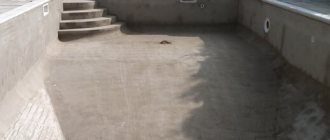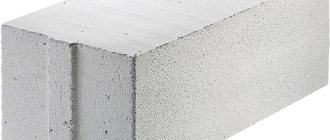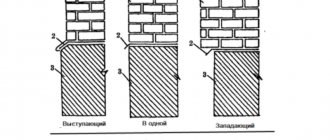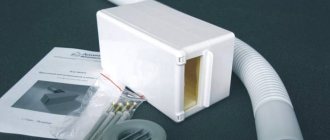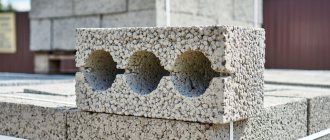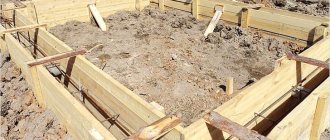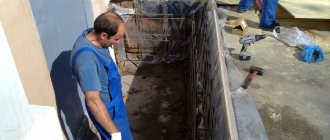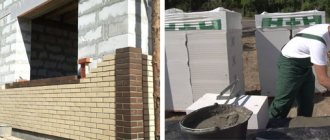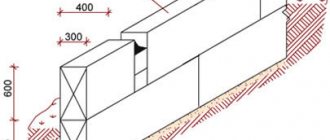If you have your own house or plot, sooner or later the thought of building a swimming pool will come to your mind. For example, the owners of their own sauna in the house are happy to dive into water heated to a pleasant temperature after a good warm-up, and what can we say about swimming in their outdoor pool on a hot day!
A swimming pool is a very complex design; when creating it, you need to take into account a large number of details. This includes location, size, finishing, which can be very diverse, the water supply system, and - most importantly - the water purification system. Imagine how much debris can get into an outdoor pool! Indoors, grass, leaves, insects and other debris enter the pool in much smaller quantities, but contamination during use is inevitable, and cleaning is also necessary. Overflow pools can easily handle water purification.
Overflow pool
In a pool equipped with an overflow system, the water is flush with the surface of the ground or floor. Along the edges of the pool, a trough-tray is installed, covered with a decorative lattice: when a person is immersed in the pool, water overflows over the edge into this trough, and from there it enters a tank (reservoir), for which a special place is allocated in a separate room. From there, using a pump, the water is sent for filtration and heating, as well as disinfection. After this, the purified water is returned to the pool.
Skimmer pool
Water is collected in this filtration system using a skimmer.
Skimmer pools are intended more for private, personal home use than for public, commercial use.
Design and principle of operation of a skimmer pool
Skimmer
. This is a special unit for collecting water directly from the pool bowl and delivering it to the cleaning and filtering systems. It can be plastic or stainless steel.
The skimmer is installed at a level of approximately 10-15 cm below the edge of the pool bowl. The water level in the pool, accordingly, is also 10-15 cm below the edge. The water and skimmer levels must match. More water should not be allowed.
The skimmer consists of:
- tank - water flows into it from the pool bowl,
- side windows - it is through them that contaminated water is collected from the surface of the pool,
- floating valve - it separates clean water from dirty water,
- mesh filter - it retains large debris from the surface of the bowl directly in the tank,
- a pipe connected to the tank through which water moves to the filtration, purification and heating system.
The number of skimmers directly depends on the size of the pool itself, as well as on the power of the filter system equipment. Approximately 1 piece per 15, 25 or 35 m². This depends on the technical characteristics of the particular skimmer.
Filtration system
. After clearing large debris from the skimmer, water is sucked through its pipe by a pump and enters a filtration unit (a sand filter is often used). This is where its physical cleaning, filtration, disinfection and disinfection take place. And then it moves to the heating system, where it is heated.
Water supply nozzles
. Through them, already purified water flows back into the pool bowl. They are located directly opposite the skimmer.
Bottom drain
. With its help, water from the bottom of the bowl also flows through the pump to the filtration equipment. This happens simultaneously with the process of water intake through skimmers.
Advantages of skimmer pools
- Lower cost compared to the previous type.
- Simplicity of design and cleaning system.
- Easy to install and assemble.
- Setting up a skimmer pool requires less space.
Disadvantages of skimmer pools
- Water purification is worse compared to the previous type of pools.
- Areas may be created where water stagnation and so-called temperature changes occur.
- The cost of disinfection and chemicals is higher compared to overflow pools.
- The water level is below the edge of the pool. Visually, this may look less attractive than completely filling overflow pools with water. But what is really not visually attractive is that over time, lime deposits can form on the walls of the pool itself.
How to overflow a round pool
According to the requirements of building codes, the radius of a round pool bowl is more than two meters. It is important to position the bowl correctly to ensure a comfortable rest.
In this case, the design features of the overflow system should be taken into account:
- a tray located in a pit is constructed along the perimeter of the reservoir;
- the trays are joined with a slight slope towards the storage tank.
The design of the overflow system for a round pool does not differ from the water drainage system for pools of other configurations.
Where to order the construction of a swimming pool
You can order the construction of turnkey swimming pools at. Our specialists will provide a full range of services: from consultation, design, construction, installation of equipment and maintenance of pools of all types, shapes and sizes.
We work throughout the Southern Federal District, including the cities of Armavir, Krasnodar, Labinsk, Maykop and Sochi.
In addition to the construction, including overflow and skimmer pools, we are engaged in the wholesale and retail sale of chemicals and related equipment for swimming pools.
Which is better to choose: an overflow or a skimmer pool?
Having examined the filtration systems, the design and schemes of their operation, the pros and cons of the two types of pools, we can conclude that the greatest differences between a skimmer pool and an overflow pool, of course, are in the design itself and the principles of its operation, as well as cost and visual appearance.
Each of these types has its own advantages and disadvantages. Therefore, when faced with choosing a skimmer or overflow pool, first of all, you need to start from the purpose for which the pool will serve: commercial or personal. For the first case, overflow pools and... For the latter, a skimmer will be enough.
Also, an important factor when choosing the type of pool will be the available or allocated budget. After all, installing an overflow pool and its entire system can be significantly more expensive compared to its opponent.
In any case, rely on your personal preferences, taking into account all the pros and cons described above.
How the grid for overflow and removal of contaminants is designed
A grill is installed above the receiving tray, which performs the following functions:
- receiving water displaced by waves into a tray;
- retention of large debris on the surface;
- decorating the contour of an overflow pool.
For the manufacture of the receiving grille, polypropylene is used, which is resistant to ultraviolet radiation and has increased strength. The lattice contour is formed from individual elements connected using special locks. The design features of the decorative grille allow it to be used for water tanks of various configurations and sizes.
Pool filters
Filters are used to purify the water in the pool. They are distinguished by the material used for filtration. They happen:
- mechanical,
- chemical,
- combined,
- electrophysical.
Sand, a special membrane (woven or not), and activated carbon are usually used as a filter element. Their principle of operation is simple: passing through a layer of sand, a membrane or a layer of coal, most of the contaminants settle on them. At the output we have water without most of the impurities, which returns to the pool. This is an option for water purification without chemicals, but it is acceptable only for small volumes of water: no more than 10 m3.
Quartz filter for pool
Depending on the filtration material used, mechanical filters are:
- Quartz filter for pool. In them, water is purified by passing through special sand. Its replacement period is 3 years. The main disadvantage is that only particles larger than 20 microns are retained, all others remain in the water. One subtype of this uses glass sand.
Sand filters - quartz and diatomaceous earth - have a similar design.
Only the “filling” is different. They are available with side or top pipe connections. Due to the smaller size of sand grains, the water in the pool is cleaned twice as well. In addition, the service life of such sand is 5-6 years. The peculiarity of such devices is that they need to be cleaned daily. For cleaning, a six-position valve is used, which allows the system to operate in several modes, one of which is sand washing. By periodically switching the valve, you wash out the sand. - Diatom filters for pools. Here the contaminants settle on the crushed shells of marine life. With their help, all particles larger than 3 microns in size are retained, i.e. The cleaning is very high quality. The disadvantage is that the filler needs to be changed once every six months, and it costs a lot.
- Cartridge filters for pools. A whole system of mechanical removable filters of different densities allows you to retain particles larger than 10 microns. Pool water purification is more thorough than when using sand. Moreover, there is no need to clean such a filter daily. Once dirty, the cartridge can be removed and washed; if the dirt is no longer washed out, it needs to be replaced. Maintenance is not difficult, but you need to have a supply of cartridges (it’s cheaper to buy with the pool). Despite easy maintenance and a good degree of purification, this type of filter is less popular than quartz filters: they cost more.
Replaceable filter cartridge in the INTEX pump
Electrophysical filters for swimming pools appeared not so long ago. They use ozone, ultraviolet radiation, copper and silver ions for purification.
Purifying pool water with ozone is one of the most harmless and environmentally friendly methods. The process uses the powerful oxidative properties of ozone, which, passing through water, destroys all bacteria without changing the composition of the water. During the reaction, ozone is released back into the atmosphere.
Advantages of this method:
- The high oxidative activity of ozone destroys almost all harmful organisms.
- When processed in water, the amount of oxygen increases, which leads to the absence of odors.
Not bad, but there are also significant drawbacks:
- To carry out ozonation, a special installation is required. It's expensive.
- An overdose of ozone is harmful to the body. For the concentration to be safe, it should be no more than 0.03 mg/m3, that is, three and a half times less than chlorine. The situation is complicated by the fact that the effect of this substance on the body has not yet been fully studied, and what is known does not inspire optimism. In Germany, for example, the use of new installations is prohibited.
Scheme for purifying pool water with ozone.
The method for purifying pool water with silver and copper is based on the process of electrolysis. As a result, non-ferrous metal ions are released into the water, destroying bacteria and algae. The water does not change its composition, nor does it change color or smell. This cleaning method has one drawback - it cannot neutralize fungi.
The scheme for cleaning and disinfecting the pool in this case is simple: after the filter, a container with electrodes made of the appropriate metal is installed, to which direct current is supplied. The ions it knocks out disinfect the water.
The use of ultraviolet radiation is another way to purify pool water without chemicals. The effectiveness of ultraviolet light is known to everyone, but this method will not work in cloudy or heavily polluted water. This method of treatment preserves all the beneficial properties of water, but the effect does not last long: microorganisms that enter the water after treatment successfully multiply. Therefore, this method is recommended to be combined with some type of reagents.
Connection diagram for an ultraviolet water filter. The installation is connected after the mechanical filter and serves for disinfection
Chemical filtration systems purify water using reagents and can carry out one or more operations simultaneously (depending on the model). To ensure high-quality cleaning of the pool, it is recommended to carry out a whole range of measures:
- Use bacterial cleaning preparations. The most common of them are: chlorine, bromine or active oxygen. Chlorine is known to everyone - it is a good disinfectant, but it can cause allergies, and also has a persistent unpleasant odor. In addition, many chlorine compounds are poisonous. But this is one of the most effective drugs.
Purifying pool water with chlorination/bromination
Bromine cleans no worse, but has no odor. Active oxygen, when dosed correctly, does not harm humans or nature and purifies water well, but such preparations are expensive. Purifying pool water with active oxygen is, when done correctly, one of the most harmless, but nevertheless very effective methods. - Periodically, special flocculant preparations are used to eliminate fat particles and small contaminant particles that were not caught by the filters. They “knock down” small particles into larger ones, which are then “catched” by the filters. They are needed if even after cleaning the water remains cloudy.
- Use preparations to kill microscopic algae.
- Maintain a neutral Ph balance. Before adding any drugs, you need to measure the acidity level of the water, and then add the appropriate drug in the calculated dosage (the calculation is given on the package). For many of the above drugs, there is a specific Ph level at which they act effectively. Therefore, before treatment, the acidity of the water is measured and adjusted to the required value.
For primary water purification when using chemical filters, nets, nets, and vacuum cleaners are used, which do a good job of removing large particles. Reagents handle the rest.
Combined filtration systems contain both mechanical and chemical filters. Since this pleasure is expensive (both the equipment itself and the filters/reagents), such systems are installed in large and public swimming pools. If you install a sand filter, and after it, for example, an ultraviolet installation, this will be a combined system.
- heat exchanger, which is used to heat the water in the pool;
- circulation pump providing the required pressure;
- ozonation systems (3), ultraviolet treatment (2) and chlorination (4).
Scheme of water treatment in a stationary public swimming pool
Only such multi-component purification can guarantee the safety of water in public swimming pools, and even then not 100%. But for a small swimming pool in a bathhouse, it is quite enough to use mechanical filters and periodically drain the water, carry out mechanical and perhaps chemical cleaning of the bottom and walls of the pool.
Read about the means of mechanical and chemical purification of pool water in the article “Cleaning a pool: means and methods”
- installation of a counterflow system - for better water circulation;
- electric heater - to increase the temperature to a comfortable one;
- disinfection systems: ozonizers, ultraviolet irradiators, silver or copper treatment systems.
Mounted pumps do not require installation of nozzles in the walls of the pool bowl
There are two types of filter stations for swimming pools: mounted and ground-mounted. Mounted ones are simply hung on the side and connected to a 220 V network; they are suitable for stationary and frame ones. Only land-based options can work with inflatable ones.
Hanging filters for stationary pools are good because there is no need to make holes in the walls for nozzles. This is an excellent solution if, during the construction of a concrete or brick pool, they forgot to install the embedded parts and did not install the water supply and drainage pipes. In this case, there is no need to break the bowl and install the necessary fittings.
Powerful pool pump Kripsol Koral KS-150. Productivity - 21.9 m3/h. Supply voltage - 220 volts.
The filter itself is a simple device, and there are several homemade options that will maintain the normal state of water in a small pool.
For such a device you will need a piece of polypropylene pipe about 2.5-3 meters with a diameter of 50 mm, an angle of the same diameter, one or more cartridges that are used for water purification (their diameter is 50 mm, therefore the diameter of the pipe is such), a pump and a pin M12 with thread of the required length. How does this filter work? At the bottom of the pipe, a pump pumps water, it passes through the filters and pours out through the corner back into the pool.
Pool water filtration system, assembled
We drill a hole in the cartridges and a corner, string them on a pin, and insert them into the pipe. We take the pin out through the hole in the corner and fix it with a nut. The pump is quite suitable from those used for aquariums. It is connected to the lower end of the pipe. DIY pool filter assembled. To make it “float”, several pieces of high-density foam can be attached at the top and bottom.
Advantages of skimmer filtration systems
Among the advantages of pools with skimmers, it is worth highlighting:
- simple design and easy installation;
- low cost (10-15% cheaper than an overflow pool);
- no need to install a container below the water level.
We invite you to familiarize yourself with Easy and simple do-it-yourself sauna stoves with a water tank
Among the advantages of infinity pools it is worth noting:
- high level of water purification: there are no blind spots, as is the case with skimmers;
- The water is filled level with the floor, making the pool visually appear deeper and more beautiful.
